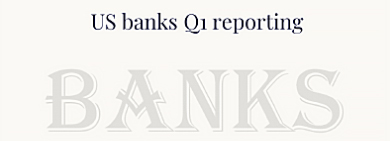Observations

US June economic figures
Has an upcoming recession become less likely over the past half a year? We would not say so. It looks like the economy is getting less hot more slowly than many thought, but we can find very few arguments for the situation has changed in principle. With that said, we assume that the most powerful driver for the current market is the momentum it has gained, but not fundamental gauges.

US economy strength and consumer demand
During the recent FOMC press-conference, Chair Powell from the Fed highlighted that the US economy appears more resilient than previously thought. However, the robustness of the US economy could prove misleading. Consumer demand yields high profits. In turn, these corporate profits underpin the labor market. A heated labor market encourages consumer spending, imparting a sense of stability. This positive feedback loop supports the economy, yet it could also precipitate an abrupt crash.

2023 Q1 reporting season
Q1 companies’ reporting is better than expected, however investors are taking this with cautiousness. Large caps look quite resilient, mid-cap tech stocks, by contrast, were sent lower, marking the traders’ intention to cut risk.

Banks
A recent bank run has sent bank shares down. However, the Q1 reports of the largest US and European banks have been quite positive. In this brief analysis, we will take a closer look at what has happened to banks in Q1 2023.

February market correction and inflation fears
Following a substantial market rally in January, fears of inflation have resurfaced. Several important macroeconomic indicators that were released in February and March have indicated stronger-than-expected inflation pressures and a hotter-than-expected labor market, leading investors to anticipate more aggressive actions from the Fed. As a result, both bonds and equities were sent down ahead of the March FOMC meeting. However, this review suggests that the combination of macroeconomic data is seasonal and temporary, and that the market correction presents an opportunity to take on risk.

US Vacancies rate
The vacancies rate a.k.a. JOLTS Job Openings rate (the ‘vacancies’) has the lowest possible rating of popularity in Bloomberg. The recent reding for September was a negative surprise for investors. In this review we are highlighting why this statistic deserves more attention and why the upcoming statistics which is about to come out on the 30th of November can be a positive surprise.